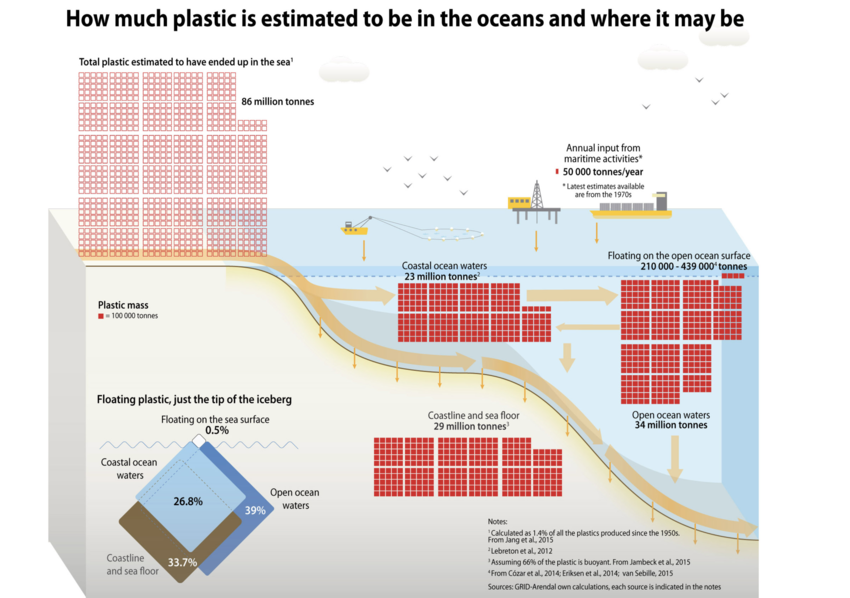We can stop plastic pollution at the design stage - here is how
Better management of plastic litter on land would clearly reduce the amount entering the oceans, but that doesn’t address the issue of what to do with the overwhelming amounts of plastic waste we generate in the first place. There is nowhere to throw it all away.
One way to approach the challenge is by transitioning to a circular economy, where the crucial concept is the designing out of waste. The key to the success of the circular economy approach is to focus on the design stage, rather than trying to deal with waste at the end of the product’s life.

Our oceans now contain 86 million tonnes of plastic waste - and counting
Image: GRID-Arendal/Maphoto/Riccardo Pravettoni
In the case of plastic, the idea is to change practices and encourage innovation so that we use less plastic; design plastic products so that they can be reused; develop technologies to allow more effective and efficient reprocessing of used plastic; and devise and use safer alternatives to traditional plastics.
Plastic packaging, synthetic textiles and clothing, and short-lived, fast-moving consumer and institutional products made of plastics contribute significantly to the generation of marine plastic litter. There is hardly any global, regional, national report or research study on marine plastic litter that does not point out the contribution of packaging, single-use or short-lived consumer products, personal care products containing microbeads, synthetic clothing and microfibers, and fishing gear lost at sea.
The rapid, flowing nature of plastic packaging and short-lived plastic consumer products which become waste needs to be addressed by the consumers of plastic packaging, namely industries such as manufacturers of food and beverage producers, shoes, textiles and garments, as well as the manufacturers of short-lived consumer products. This is best done at the design phase within the value chain, through collaboration with plastic producers and converters - the companies which manufacture plastic products, ranging from toothbrushes to building pipes, from fruit boxes to car interiors.
In the product design stage, the following approaches might be considered:
1) Scrutinizing the necessity of packaging altogether
2) Selecting renewable, biodegradable and compostable materials and additives that are not toxic or that are less toxic than fossil-based plastics
3) Designing for less material use in order to decrease waste
4) Designing packaging and products that use a single or small number of polymers that are easy to separate during recycling
Policy measures to incentivize circular economy practices in design could consist of supporting the implementation of innovations in the re-design of existing products and the design of new products, as well as support for innovations and start-ups, in particular those related to new, biodegradable and compostable plastics.

 English
English 